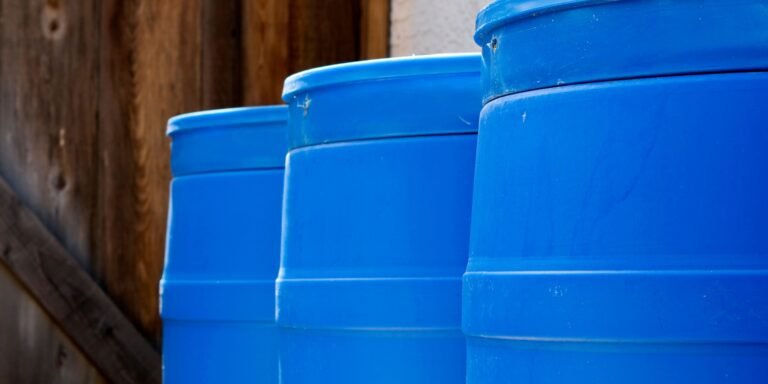How To Use Activated Charcoal for Stomach Bugs In An emergency
This post may contain affiliate links, full disclosure here.
Activated charcoal is available in a variety of forms, including tablets, capsules, pellets, powder, and suspension. It is primarily used as an antidote to poisons and drugs. It is currently being used off-label to treat bloating, diarrhoea, and stomach bugs.
There is still no concrete evidence that activated charcoal can be used to treat stomach bugs (norovirus) and bacterial diarrhoea. However, the risk is negligible in comparison to the perceived benefit. For stomach bugs, bloating, and diarrhoea, adults should take 1g every 4-5 hours until the symptoms subside. This typically takes 1 to 2 days, but it can take longer in some cases.
See also: Top 20 Barter Items to Stockpile
What is Activated Charcoal?
Activated charcoal, also known as activated carbon, is finely ground carbon or a tablet that has been processed to create a network of pores, resulting in a larger surface area with a high affinity for various substances.
It attracts gas, compounds, electrolytes, and other molecules to its surface, much like a magnet. This is referred to as adsorption and is distinct from absorption.
In contrast to adsorption, where the substance only sticks to the surface of carbon particles, substances are accumulated within the absorbent material during absorption. This means that other substances can dislodge the substances stuck on activated charcoal (desorption).
What are Stomach Bugs?
Stomach bugs are microorganisms and viruses that cause nausea, vomiting, diarrhoea, and gastroenteritis. These symptoms are caused by viruses invading the stomach lining. The majority of bacteria, on the other hand, produce toxins that irritate the gastrointestinal tract.
What Is the Process of Activated Charcoal?
In theory, ingesting activated carbon can adsorb the offending virus (norovirus), keeping it away from the intestinal walls and allowing it to be eliminated more quickly through the stool. It can also help relieve vomiting, which is the body’s response to try to eliminate the virus because it keeps the virus away from the stomach lining.
It can also be used to treat Traveler’s diarrhoea in addition to treating stomach flu (TD). Enterotoxigenic Escherichia coli (ETEC), which produces enterotoxins, is a common cause of TD. The enterotoxin is adsorbed and eliminated faster in the stool after ingesting activated charcoal.
Poisoning and Drug Abuse
The FDA has approved the use of activated charcoal as an antidote for poison ingestion and drug overdose. The dosage and instructions for using it are listed below.
Take a single dose of 10g per 1g of drug right away.
If the amount of poison and drug is unknown, a single dose of 1g/kg body weight can be administered.
The lowest effective dose is 25g.
It can also be given in increments of 25g to 50g every 4 to 6 hours.
If the ingested poison is corrosive, or if the airway is unprotected, as seen in people with altered mental status, do not administer activated charcoal. Activated charcoal will not help remove a corrosive substance and may even be harmful. There are also the following contraindications:
Cyanide poisoning
Caustic alkali ingestion
Organic solvents
Iron poisoning
Ethanol and methanol poisoning
Lithium
Methionine
In cases of constipation, and possible intestinal obstruction
Anatomically broken gastrointestinal (GI) tract
Intestinal bleeding or GI tract perforation
Side Effects of Activated Charcoal
Because activated charcoal is not absorbed by the body, there is no risk of systemic effects. However, it can cause constipation and black stools.
In rare cases, it can cause sluggish intestinal movement, which can lead to intestinal obstruction and backflow and regurgitation into the lungs.
Other Precautions Regarding Activated Charcoal
Taking activated charcoal in tablet, capsule, or suspension form is as simple as swallowing it with a little water. To prevent accidental inhalation of powder, it must be mixed with some water.
Because activated charcoal can adsorb almost anything, it should not be taken with other medications because it will cause poor absorption and a reduction in the drug’s effect. When used as an antidote, it should not be mixed with any other liquid other than plain water.
Drink plenty of water if you’re taking a lot of it to avoid constipation.
Commonly Held Beliefs about Activated charcoal
It is a common misconception that activated charcoal can reduce GI tract swelling. This is only partly correct. If the swelling is caused by a toxin, bacteria, or virus on the surface of the GI tract’s lining, activated charcoal will help.
If the swelling is caused by a systemic disease, such as inflammatory bowel disease, or a protozoal infection that lives inside the cells of the GI tract, activated charcoal will have no effect. This is due to the fact that activated charcoal is not absorbed and will only work within the GI tract’s lumen (a channel within a tube).
Regular Charcoal vs. Activated Charcoal vs. Charcoal Briquettes
The primary distinction between the three is that activated charcoal is designed to have a very large surface area. This is accomplished by passing a high-temperature oxidising gas through the carbon particles or by using activating agents to create fine pores that expand the particles.
Activated charcoal is also made to be safe for human consumption. Regular wood-burning charcoal can also be consumed. It is, however, less effective than activated charcoal, and a larger amount is required to achieve the desired effect. Because of the high dosage required, there is an increased risk of constipation and intestinal obstruction.
Charcoal briquettes, on the other hand, should never be consumed because they contain toxic additives and chemicals.
How to Make Activated Charcoal at Home
When the worst happens, preppers can make their own activated charcoal for a variety of uses. This is a straightforward procedure that requires little to no training. Because these are generally shelf-stable ingredients, prepping the required chemicals should be included in a prepper’s stockpile.
You Need:
- Charcoal
- Calcium chloride
- Stainless steel bowl
- Glass jar with a lid. Do not use any material made from aluminum or other reactive materials.
- Weighing scale
- Kitchen mittens
- Coffee filters
- Cheesecloth
- Stainless strainer
Step 1: Collect or make your own charcoal, then wash it to remove ash and other debris. Allow it to dry completely in the sun or in a low-temperature oven.
Step 2: Crush the charcoal with a mortar and pestle or in a Ziplock bag before crushing with a rolling pin. Make sure to completely crush it into powder.
Step 3: Make a 25% calcium chloride solution. Fill the jar with 300ml of water, followed by 100ml of calcium chloride. Caution: This solution will generate heat, and the jar will become warm. When not in use, cover the jar partially.
Step 4: Place the powdered charcoal in a mixing bowl and gradually pour in the calcium chloride solution until spreadable paste forms. Allow this paste to dry in the bowl for at least a day.
Step 5: Place the dried mixture in a cheesecloth-lined strainer over a stainless strainer. It is critical that the cloth be clean, without any detergent residue, and unscented. The powder should be washed under cool running water. Catch the running water with a coffee filter as well; this water still contains some activated charcoal.
Step 6: Spread the contents on a nonstick baking sheet and bake at 250o F for 30 minutes, or until completely dry.
Step 7: Allow it to cool before breaking it up and storing it in an airtight container.
More Survival Uses of Activated Charcoal
Filter for emergency drinking water
Filter for a gas mask in an emergency
Poultice of activated charcoal for insect bites, stings, and minor skin irritation
Activated Charcoal for Stomach Bugs Bottom Line
Having activated charcoal on hand for stomach bugs and other uses will greatly improve your chances of survival, especially in SHTF situations. Excessive fluid loss due to diarrhoea has the potential to be fatal. When no antibiotics are available, activated charcoal is a viable option.







